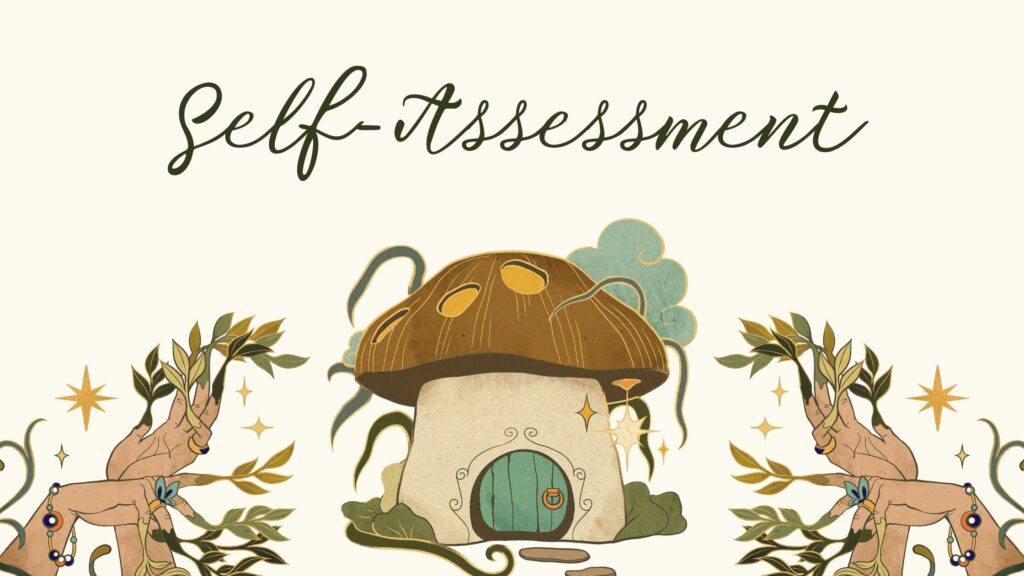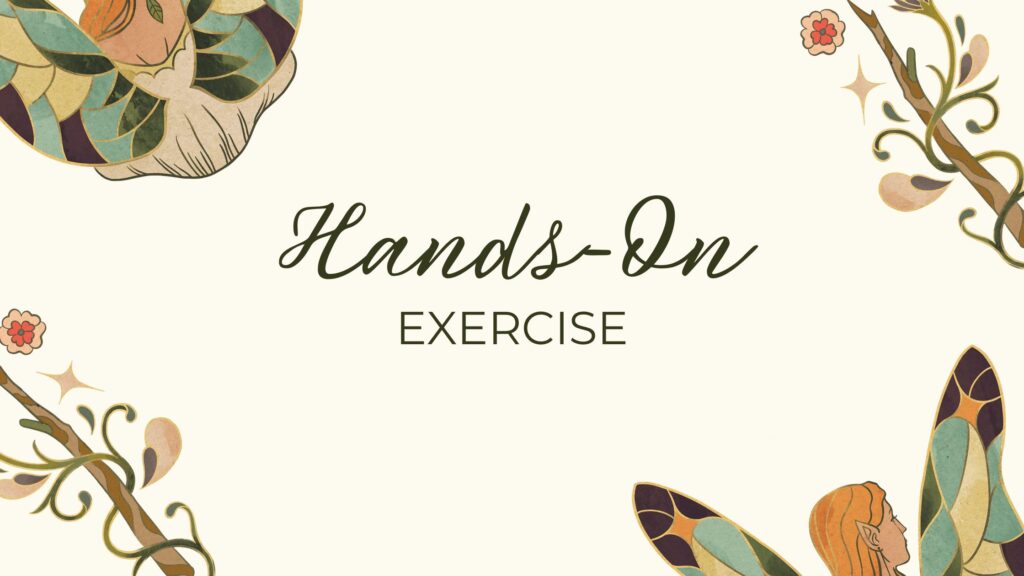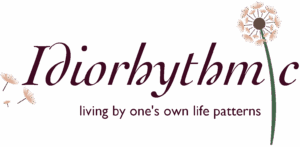Introduction
Welcome to the third module in the Live Your Magic workshop. Today we’re going to focus on two tools for personal transformation: divination and crafting.
Divination
When we think of divination the image that tends to come to mind is the tarot card reader who looks into our future to tell us if we should start that business or break up with our romantic partner. However, divination can be a powerful tool for self-knowledge and transformation. I use divination less as a prognosticator and more as a tool for deep reflection and to see my blind spots.
You can also tap into divination for help in questions of how to live your life more magically. The first step is to pick a divination tool that suits your personality and needs. This requires a little bit of research on your part. You can play around with different types of divination. Tarot cards are the most popular and there’s a reason for that. The cards have an established tradition of lore and meanings that have become nearly universal. You can pick up a book on how to read the tarot, watch YouTube videos, or even hire someone to teach you. Tarot decks also come in so many different styles that you are sure to find a deck that interests you.
However, just because tarot is popular doesn’t mean that it is necessarily the right tool for you. Look into other forms of divination like runes, a pendulum, oracle decks and charm casting. Play around with a few different forms to see if any feels right to you. If you want, you can even make your own divination tool, like the Sewing Tin Oracle that I wrote about on my blog. Also, there are websites and apps that you can access for free that draw cards for you, so don’t feel like you have to spend a lot of money on this.
While I’m encouraging you to play around with the different forms of divination, I do want you to take the time to “interview” them as well. Ask questions like, “What do you have to teach me?” and “How can I best learn from you?” There will be a handout in this lesson with more interview questions that you can use to interview a form of divination. Even asking, “How best can we work together?” can give you an idea of if this form of divination is right for you. If you are getting overwhelmingly negative responses from the tool in question it might be best to move on to a different one. You don’t want a tool that only gives you sugar-coated responses, but neither do you need constant pessimism.
When you are working with your divination tool, don’t ask yes/no questions. Keep your questions more open-ended like, “What do I need to know right now?” “What is working against me?” “What tools do I have at my disposal?” If the answer is muddy, or confusing, don’t be afraid to ask follow up questions to clarify the situation.
Once you have chosen a form of divination to incorporate into your day-to-day life you are going to start doing daily pulls at the beginning of your day. Before you do so, you will sit for a few seconds focusing on the question you are asking. I suggest a question like, “What do I need to know for today?” Once you have the question firmly in your mind you’ll draw your card, rune, charm, or what-have-you, and see what the answer is.
Do this exercise everyday for a month. Record what you got in your journal and what the meaning of what you pulled. This doesn’t have to take more than a minute or two of your time. Add a sentence or two of your own feelings about what you pulled. At the end of the thirty days look back over what you have recorded. Are there any themes that emerge? How did what you pull relate to what happened that day, week or month?
You don’t have to continue a daily pull after the thirty days, but as we discussed in the last lesson, rituals are important, and checking in with your divination tool on a regular basis is one ritual that can help you in so many ways. It helps you be mindful of what the day is going to bring you, it helps you tap into your intuition, and it begins the task of teaching you how to read a divination tool without having to constantly reference a guide book.
Crafting and Creating Art
Modern witchcraft is full of labels when it comes to the question of what kind of witch people are. Our modern society, so in love with definitions and putting everything in a box, encourages us to choose a designation. When I am pressed to answer that question I will call myself a witchcrafter, because that is the best label I can come up with. And this is because I see a profound link between magic and crafting.
That isn’t the only way that crafting can help us with our lives. As Dr. Susan Biali Haas states, “When we engage in a repetitive task, completely taking our minds off whatever problem or issue we have been struggling with, the solution will often magically appear.” (“Working with Your Hands Does Wonders for Your Brain” by Susan Biali Haas M.D.)
Crafting feeds into your creative side, firing up your passion and getting you to a place where you feel good about what you are doing. And that creativity, that ability to see things differently, is one of the cornerstones of witchcraft and magic. Witches don’t see the world as it is, we see it from different angles, which gives us insight into ways to make the world work the way we want it to.
And so, I encourage you to experiment with crafting. Find something you enjoy and that you can do with your hands. This can be knitting, putting together a puzzle, diamond painting, flower arranging, cross-stitch, painting, whatever. If you need to, explore a few different crafts to find the one that speaks to your soul.
When you engage in your hobby, find ways to tie it to magic. Diamond painting, for example, can be linked to glamour spells. Knitting, crochet, macrame and weaving all involve knots that can be used for knot magic. Cross-stitch, putting together puzzles, and other hobbies that involve deep thinking and repetitive motions are good for meditative practices. Sigils can be added to your paintings and you can scrapbook pages for your book of shadows. Looking at your hobbies through a magical lens is one of the best examples of enchanting your life.
Crafting and magic also go hand in hand when it comes to creating your own magical tools. You can make wands, offering bowls, pentacles, divination tools, sculptures of deities and more with your own hands. The added benefit of making your own magical tools is that they are then attuned to you, and will work better than an item you bought from the store.
Finally, crafting offers a look at what it means to create from raw materials, which is the definition of magic. It provides an example of change from one state to another. And it gets us used to working with magic in an environment that is usually considered mundane.
Personal Transformation
These two tools–divination and crafting–are important to the personal transformation you go through when you decide to live your magic. Divination gives you insight into what you need to engage in the transformation, whereas crafting helps you see transformation happening all the time. Having that example is important because it reinforces the idea that one, change is possible, and two, that change is possible for you.
This, then, goes to the idea that transformation doesn’t have to be a big, dramatic thing. You don’t have to start off the new year with resolutions meant to overhaul your life, personality and goals all in one fell swoop. That sort of thinking more often than not leads to failure as we are trying to take on too much at once.
Implementing small changes over time is more sustainable in the long run than big changes. This is why I encourage you to do little things like a daily card pull or writing in your dream journal each day for thirty days. Putting in the effort in these small ways soon makes them habits and once you are doing them without having to think about it, you have set your mind up to viewing your life through a magical lens.
When we talk about personal transformation we also have to talk about motivation and courage. The fact that you are here, watching this video and working through this course is evidence that you have the motivation to change. But we can often make up reasons why now is not the right time for change. We might tell ourselves that it’s too late in the year, or that we need to wait until Monday for a fresh start, or we might think about times we’ve tried to change in the past and failed. It’s that memory of failure that often bogs us down. And this is where you once again are going to turn to your divination tool to ask, “What do I need to do to get started in my personal transformation?” or “What will happen when I implement these changes?” Write the response from the divination tool in your journal, or better yet, write it down on a piece of paper and keep it with you.
Another way you can deal with those obstacles is to set fire to them. Get a few small pieces of paper together and then write all your doubts, objections, and reasons why you are hesitating in making this change to a magical life. In a fireproof, heat resistant container burn the slips of paper and see your obstacles literally go up in smoke. Then throw away the ashes.
You can also carry a piece of tiger’s eye, aventurine or apatite with you to fortify your motivation for change. If you need help having the courage for change, carry a piece of sunstone or aquamarine with you.
Conclusion
When it comes down to it, magic is the process of enacting change in the world through our intention and will. Before we can work on the larger world, we must first make changes in our personal lives. The phrase, “As above, so below” can also be phrased as “As inside, so outside.” Our inner determination is what allows us to cast magic to change the greater world around us. And divination and crafting give us powerful tools to make that inner change happen by enchanting our mundane lives.
Go ahead and do the self-assessment assignment for this lesson and then the hands-on assignment. I’ll see you in the next lesson.

Now that you have gone through the lesson in this module it is time to work on your self-assessment work. The questions in this exercise are meant to get you thinking about how you can put the information in the lesson to work in your own life.
Turn to a blank page in your journal and answer the following questions as thoroughly as you are able. Take at least five minutes to answer each question. Don’t feel like you have to limit yourself to writing, either. You can doodle, color, sketch, and even collage and stamp your answer to the questions. Do what feels right and makes sense to you. Just make sure that you will be able to understand your entries later.
You can also print out the attached PDF document and write your answers there, if you want.
Go ahead and answer the following questions:
- What forms of divination will you test out to find one that works best for you?
- What does a daily divination pull look like for you? When will you implement it?
- What are your creative strengths?
- How do you plan on incorporating crafting and creativity into your life?
Lesson Handout
Use the following handout to help you in your divination practice.

Create a Vision Board
In this exercise you are going to use the image of your magical life that you created in the last module to craft a physical representation of that vision.
A vision board is simply a collage of what you are trying to manifest. In this case you are documenting what your magical life looks like. Doing this physically after you have created your visualization of it is an exercise in magic. The visualization is the first part, where you focus your intent. The making of the vision board is the spellcrafting part where you mix your intent with physical objects to help strengthen the spell. Once you have created your vision board you regularly engage with it, sending that magic out into the world.
You can create your vision board either physically or digitally. Pinterest is a great place to look for inspiration and creating a Pinterest board is a perfectly fine way to undertake this exercise.
If you are creating your vision board physically, collect photos, art, magazine cuttings, and other images to represent your ideal magical life. Use paint, markers, colored pencils and other drawing tools to embellish your vision board. I like to use stickers and rub on transfers as well. You can create this vision board in your journal so that you have it close at hand to look at often. Or you can make it and place it on your altar, next to your bed, in your planner, wherever you will see it often.
If you are creating your vision board digitally you can take a screenshot of it and make it your desktop or phone wallpaper so that you can see it often. The free software, Canva, is a great tool to use to create your vision board, as it has loads of free art you can use.
However you make your vision board, spend a good half hour or more on it. This is a process that should take time. You should feel free to add to it as you go along. Once it has been made, take the time to look at it and visualize that your life is just like how you have represented it in your vision board. Take time to reflect on it regularly, to remind yourself not only what your goal is, but to realize how far you have come in making it a reality.

There are plenty of apps, websites and books that can guide you through your divination journey. Below is a list of all three. This is not an exhaustive list, but it is meant to give you a place to start.
Apps
Look in the Google Play or Apple App store for these apps if you want to go completely mobile.
- Runic Divination by Evansir – A divination app that focuses on the runes.
- Card Reading by Xeen Software – A divination app that focuses on a regular playing deck and the cards therein.
- The Grand Lenormand by Xeen Software – A divination app that focuses on the Lenormand deck.
- Folk Fortune Telling by Andy Brow – A divination app that gives users access to several different types of fortune telling from folk practices.
- Labyrinthos Tarot by Labyrinthos Academy -The app by the Labyrinthos website.
- Visionary I Ching Oracle by Indie Go Software – An app that uses the ancient form of divination: the I Ching.
Websites
These websites offer information on the meanings behind different tarot cards and runes.
- Labyrinthos: Tarot Classes & Supplies for Modern Witchcraft – https://labyrinthos.co/
- Biddy Tarot – https://biddytarot.com/
- The Tarot Guide – https://www.thetarotguide.com/
- Futhark Runes: Symbols, Meanings and How to Use Them – https://andreashelley.com/blog/futhark-runes-symbols-and-meanings/
- I Ching Online – https://www.ichingonline.net/
- Lenormand Card Meanings – https://www.lenormandreader.com/lenormand-card-meanings
Books
- Seventy-Eight Degrees of Wisdom by Rachel Pollack
- Holistic Tarot: An Integrative Approach to Using Tarot for Personal Growth by Benebell Wen
- Complete Book of Tarot Spreads by Evelin Burger and Johannes Fiebig
- The Complete Guide to Runes: An Essential Reference for Runelore, Meanings, Divination, and Magic by Wayne Brekke
- Charm Casting by Rebecca Anuwen

